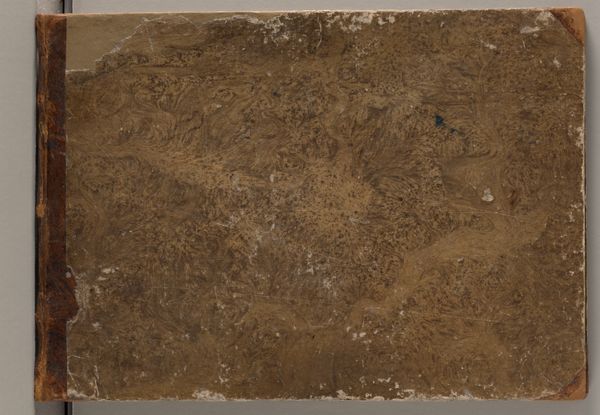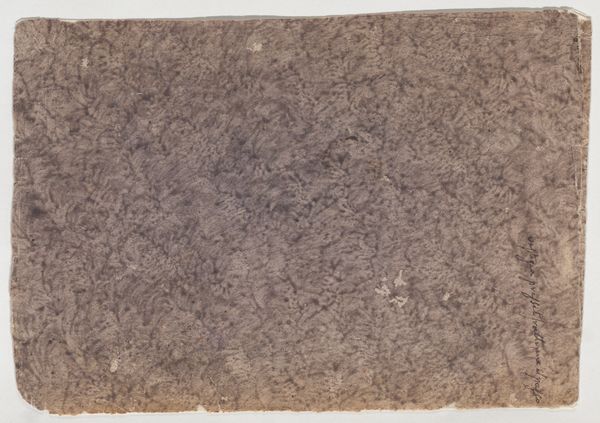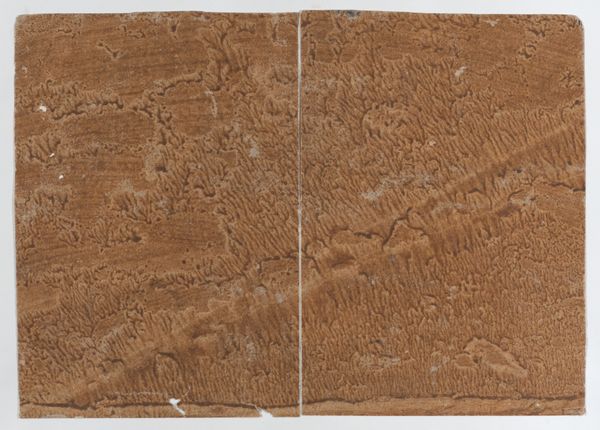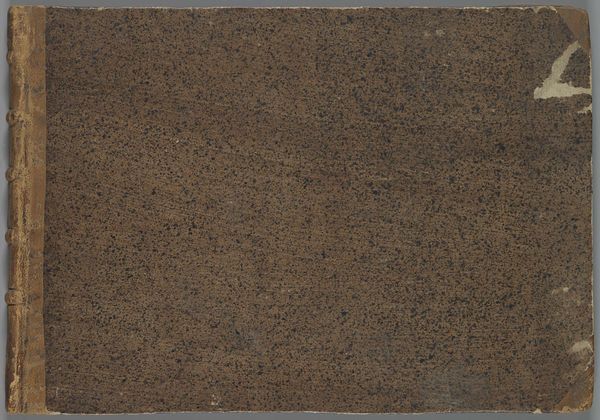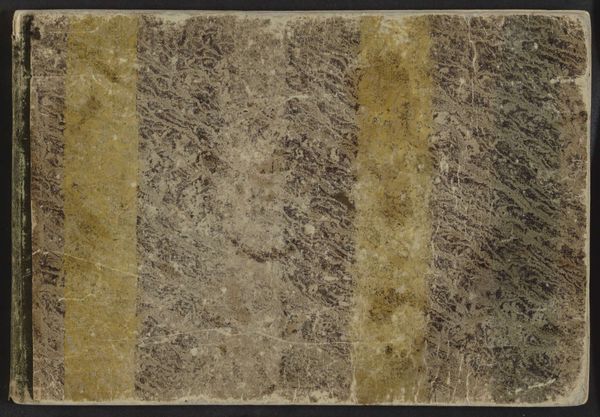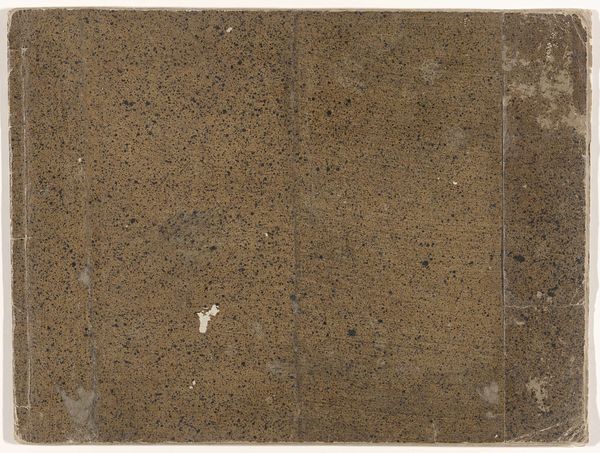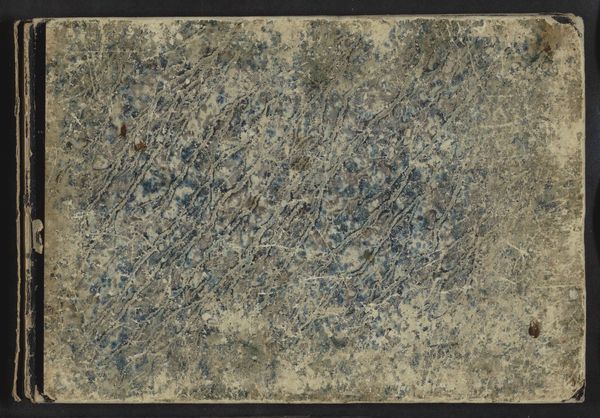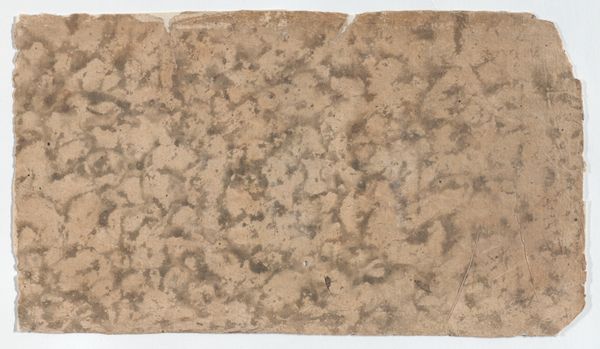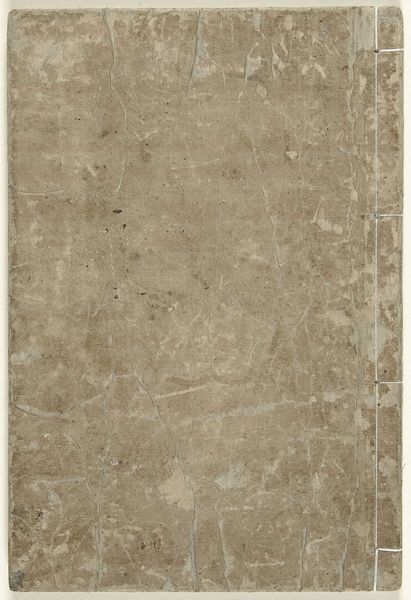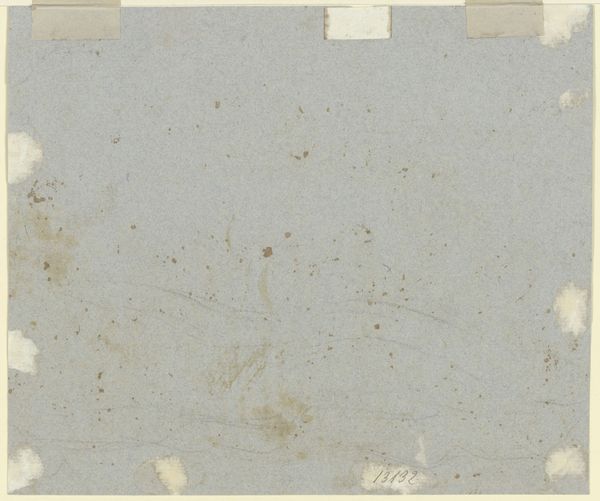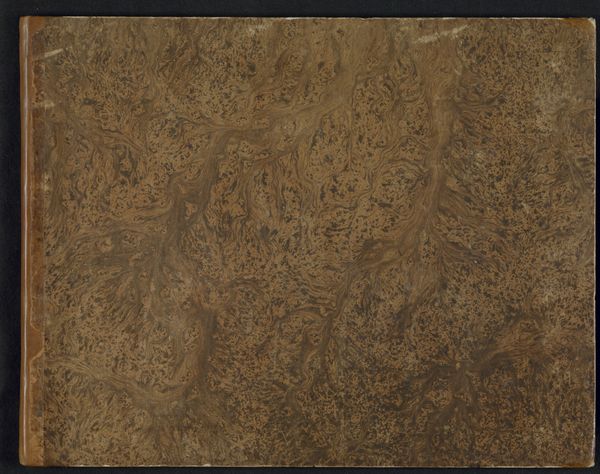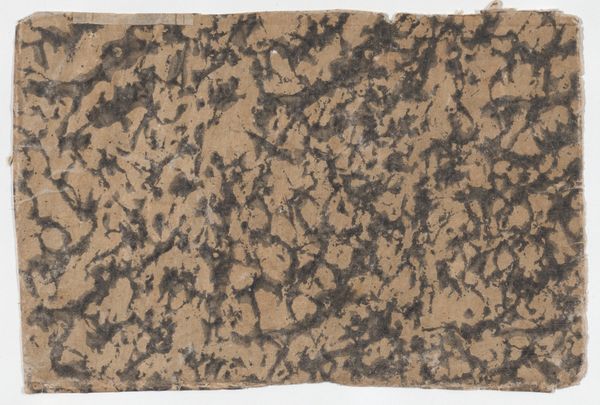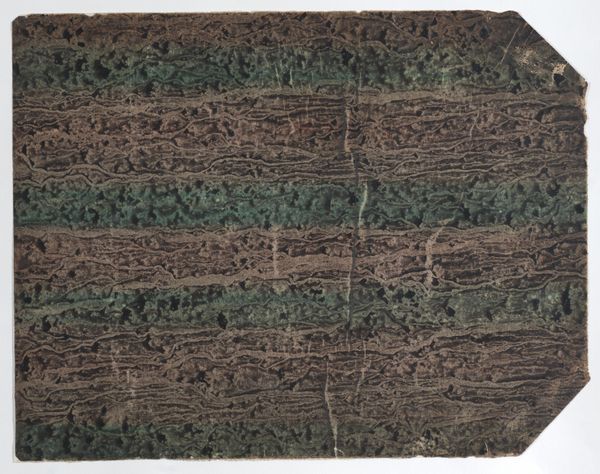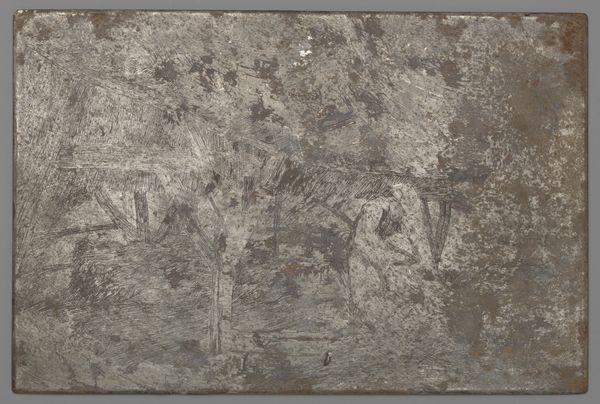
drawing, print, relief-print, paper, woodblock-print, frottage
#
drawing
# print
#
relief-print
#
paper
#
woodblock-print
#
organic pattern
#
texture
#
frottage
Dimensions: Sheet: 10 11/16 × 17 7/8 in. (27.2 × 45.4 cm)
Copyright: Public Domain
Curator: Looking at this, I see a landscape. Sort of like a storm-swept field right after a flood. What do you get from it? Editor: Well, what strikes me is the labour. The texture looks almost entirely man-made. So repetitive! Curator: You're referring to this "Green paste paper book cover" crafted sometime between 1800 and 1900. Currently residing here at the Met, this piece, though the artist is unknown, whispers tales of resourcefulness. Paste paper involves manipulating a starch-based paste on paper, then using tools to create patterns. Frottage also comes to mind. Editor: Resourceful, indeed! See, these weren't idle pastimes, were they? Making book covers was a cottage industry, women mainly at home doing this tedious manual labour... it really highlights the domestic economics of book production. It also highlights a challenge to any sharp distinction between craft and 'high' art. I mean, isn't this beautiful? Curator: Absolutely. The tactile quality here is fantastic. It feels deeply intuitive, the patterns almost...unconscious. Does that make sense? Like a visual mantra? A dance with the earth itself. You know? That pull towards the organic. And who is to say this texture and technique wasn't influential to many artists? It’s beautiful, functional, and very connected to the process. Editor: Well, thinking about the actual "doing," I agree it isn't *just* function, it's practice! How many *hours* of dedicated movement? This really asks us to consider value: both the material worth, and the human hours poured into these objects. Curator: Hours upon hours! It makes you wonder about the person behind the paper, what their life was like. Each sweep a reflection. But is the real point *all* those long hours? Editor: I am very materialist about it, I'm drawn to that part of art history and the people who maybe don't get remembered, the unknown worker or "artist" who made all the things in the world...and this person, making each little mark of movement. Curator: Okay, the feel, and touch, of this artwork make it something that asks to be held, not just intellectualized. It sings to the hand and the imagination at the same time, so the material labor that crafted its particular song really deserves to be admired, indeed! Editor: To me, that texture shows skill in design, economy of motion, care... It is humble *and* exquisite.
Comments
No comments
Be the first to comment and join the conversation on the ultimate creative platform.
